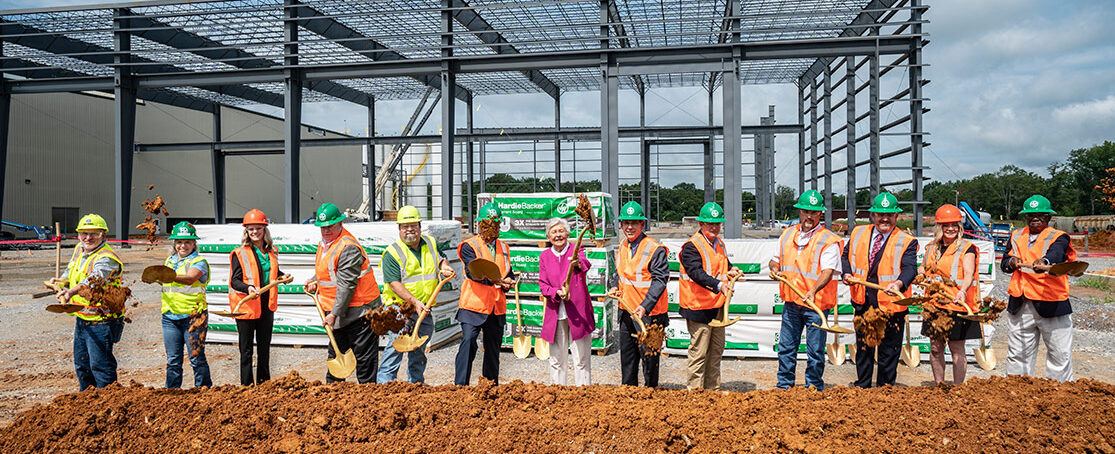Report on Alabama’s 2025 Economic Development Funding and Alignment with Sustainable Development Goals
Executive Summary
The State of Alabama has announced an allocation of over $25.9 million in funding through the 2025 Growing Alabama program. The investment, directed to 15 communities, is designed to support significant economic development projects, with a strategic focus on long-term job creation and enhancing industrial site readiness. These initiatives demonstrate a strong alignment with several United Nations Sustainable Development Goals (SDGs), particularly SDG 8 (Decent Work and Economic Growth), SDG 9 (Industry, Innovation, and Infrastructure), SDG 10 (Reduced Inequalities), and SDG 11 (Sustainable Cities and Communities). A key component of the strategy involves directing over 27% of the funding to Targeted Counties, reinforcing the state’s commitment to inclusive growth in rural areas.
Contribution to SDG 8: Decent Work and Economic Growth
The Growing Alabama program is a primary tool for achieving sustained, inclusive, and sustainable economic growth across the state. By financing projects that prepare industrial sites for new investment, the program directly facilitates the creation of high-quality, decent jobs. Official statements emphasize that these investments are foundational to building long-term prosperity and business expansion, which are core targets of SDG 8. The program’s objective is to strengthen Alabama’s economic foundation, ensuring that communities large and small are prepared for future growth and employment opportunities.
Advancing SDG 9: Industry, Innovation, and Infrastructure
Funding is allocated for critical infrastructure development, which is central to SDG 9. The projects aim to build resilient infrastructure, promote inclusive and sustainable industrialization, and foster innovation. The investments enhance the competitiveness of industrial parks and strategic assets statewide, enabling local leaders to fast-track site preparation for major economic development projects.
Key project types supported include:
- Industrial site preparation and development
- Public infrastructure improvements
- Capital improvements at inland ports and intermodal facilities
- Development of innovation and technology parks
Supporting SDG 10 & 11: Reduced Inequalities and Sustainable Communities
A significant portion of the 2025 allocations—over 27%—has been awarded to Targeted Counties. This strategic focus directly addresses SDG 10 by working to reduce inequalities within the state through the stimulation of economic growth in rural and less-developed areas. Furthermore, by improving infrastructure and creating economic opportunities in 15 distinct communities, the program contributes to SDG 11, making cities and human settlements more inclusive, safe, resilient, and sustainable. Projects such as the South Dallas Industrial Park and the Hamilton I-22 Industrial Park exemplify this commitment to geographically diverse development.
2025 Growing Alabama Program Allocations
The Renewal of Alabama Commission approved the following awards for the 2025 calendar year:
- City of Prattville: $4.9 million for Prattville South Industrial Park
- Alabama State Port Authority: $3.55 million for Montgomery Intermodal Container Transfer Facility
- Dothan Industrial Development Board: $3.26 million for Houston County Distribution Park
- Mobile Airport Authority: $2.5 million for Brookley Expansion Site
- Cleburne County Commission: $2 million for MC3 Property
- Lake Martin Industrial Development Authority: $2 million for industrial site improvements
- Calhoun County Economic Development Council: $2 million for industrial site development
- City of Hamilton: $1.47 million for Hamilton I-22 Industrial Park
- Craig Field Airport & Industrial Authority: $1.26 million for Craig Field Industrial Park
- Jasper Industrial Development Board: $949,150 for Jasper Industrial Park
- Opelika Industrial Development Authority: $921,310 for Opelika Innovation & Technology Park
- City of Cullman: $750,000 for Frank Research and Technology Park
- South Dallas Industrial Development Authority: $186,025 for South Dallas Industrial Park
- City of Ozark: $150,000 for Ozark Airport Industrial Site
- Ozark-Dale County Economic Development Corporation: $24,856 for Ozark Industrial Park
Program Framework and Partnership Model (SDG 17)
The Growing Alabama program operates on a public-private partnership model, a key principle of SDG 17 (Partnerships for the Goals). The program provides tax credits to eligible taxpayers who contribute to approved economic development organizations. This mechanism incentivizes private sector investment in public development goals, creating a mutually beneficial path toward advancing industrial development. The Alabama Department of Commerce administers the program, with project approval overseen by the Renewal of Alabama Commission, ensuring structured governance and strategic alignment.
Which SDGs are addressed or connected to the issues highlighted in the article?
-
SDG 8: Decent Work and Economic Growth
- The article focuses on the “Growing Alabama” program, which is explicitly designed for “economic development,” “long-term job creation,” and “business expansion.” This directly aligns with the core mission of SDG 8 to promote sustained, inclusive, and sustainable economic growth, full and productive employment, and decent work for all. The investment aims to make communities more competitive to attract projects that will provide “high-quality jobs.”
-
SDG 9: Industry, Innovation, and Infrastructure
- The funding is allocated for “critical site development and public infrastructure improvements.” The list of projects includes industrial parks, an intermodal container transfer facility, and airport site expansion. This directly addresses SDG 9’s goal of building resilient infrastructure, promoting inclusive and sustainable industrialization, and fostering innovation. The mention of an “Innovation & Technology Park” further reinforces the connection to the innovation aspect of this goal.
-
SDG 11: Sustainable Cities and Communities
- The program supports 15 different “communities” across Alabama, aiming to make them more prosperous and prepared for future growth. A key detail is that “Over 27% of this year’s allocations were awarded to Targeted Counties,” which is part of the state’s plan to stimulate growth in rural areas. This connects to SDG 11’s aim of making cities and human settlements inclusive, safe, resilient, and sustainable, particularly by strengthening development planning between urban and rural areas.
-
SDG 17: Partnerships for the Goals
- The article describes the program’s funding mechanism, which “provides tax credits to eligible taxpayers who make contributions to approved economic development organizations.” This is a clear example of a public-private partnership. The state government (via the Department of Commerce and the Renewal of Alabama Commission) facilitates a system where private contributions are used to achieve public economic development goals, directly reflecting the spirit of SDG 17, which encourages partnerships to achieve the SDGs.
What specific targets under those SDGs can be identified based on the article’s content?
-
Target 8.3: Promote development-oriented policies that support productive activities, decent job creation, entrepreneurship, creativity and innovation.
- The “Growing Alabama” program is a “development-oriented policy” implemented by the state. Its stated purpose is to pave “the way for high-quality jobs, business expansion and long-term prosperity,” which directly supports the creation of productive activities and jobs as outlined in this target.
-
Target 9.1: Develop quality, reliable, sustainable and resilient infrastructure…to support economic development and human well-being.
- The article details that the $25.9 million in funding is for projects like “Prattville South Industrial Park,” “Montgomery Intermodal Container Transfer Facility,” and “Brookley Expansion Site.” These are all examples of building and upgrading infrastructure specifically to “support economic development” and “enhance the competitiveness of industrial parks.”
-
Target 11.a: Support positive economic, social and environmental links between urban, peri-urban and rural areas by strengthening national and regional development planning.
- The program is described as a “state’s strategic plan for stimulating growth in rural areas” by allocating over 27% of its funds to “Targeted Counties.” This demonstrates a clear regional development plan that aims to strengthen economic links and reduce disparities between different areas within Alabama.
-
Target 17.17: Encourage and promote effective public, public-private and civil society partnerships.
- The article explains that the program works by giving tax credits to private donors who contribute to economic development organizations. This structure is a textbook example of a public-private partnership designed to mobilize financial resources for development, directly aligning with the objective of this target.
Are there any indicators mentioned or implied in the article that can be used to measure progress towards the identified targets?
-
Total investment in economic development and infrastructure (Proxy Indicator)
- The article explicitly states that “more than $25.9 million in Growing Alabama funding has been allocated.” This monetary value serves as a direct indicator of the financial resources being mobilized for economic and infrastructure development (related to SDG 8 and SDG 9).
-
Number of communities/projects supported (Proxy Indicator)
- The article lists “15 communities” and their corresponding projects that received funding. This number can be used as an indicator to track the geographic reach and implementation of the development policy (related to SDG 9 and SDG 11).
-
Investment in rural areas (Proxy Indicator)
- The text specifies that “Over 27% of this year’s allocations were awarded to Targeted Counties.” This percentage is a specific, measurable indicator of the program’s success in directing funds toward rural development, a key aspect of its strategy (related to Target 11.a).
-
Creation of “high-quality jobs” (Qualitative/Future Indicator)
- While a specific number is not given, “long-term job creation” and “high-quality jobs” are stated goals. The future number of jobs created by the businesses that move into these developed sites would be a key performance indicator for measuring the success of the program (related to SDG 8).
-
Mobilization of private funds through public-private partnerships (Proxy Indicator)
- The entire $25.9 million is mobilized through a tax credit system that encourages private contributions. Therefore, this amount serves as an indicator for Target 17.17, representing the value of resources committed through this partnership model.
SDGs, Targets and Indicators Analysis
| SDGs | Targets | Indicators Identified in Article |
|---|---|---|
| SDG 8: Decent Work and Economic Growth | Target 8.3: Promote development-oriented policies that support productive activities, decent job creation, entrepreneurship, creativity and innovation. |
|
| SDG 9: Industry, Innovation, and Infrastructure | Target 9.1: Develop quality, reliable, sustainable and resilient infrastructure…to support economic development. |
|
| SDG 11: Sustainable Cities and Communities | Target 11.a: Support positive economic…links between urban…and rural areas by strengthening…regional development planning. |
|
| SDG 17: Partnerships for the Goals | Target 17.17: Encourage and promote effective public, public-private and civil society partnerships. |
|
Source: governor.alabama.gov







